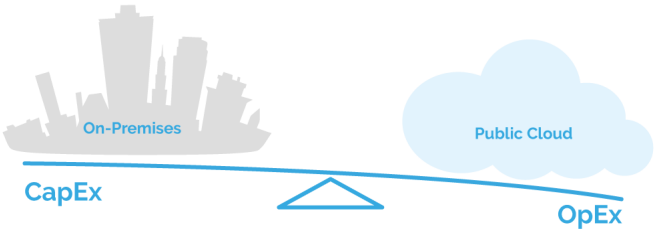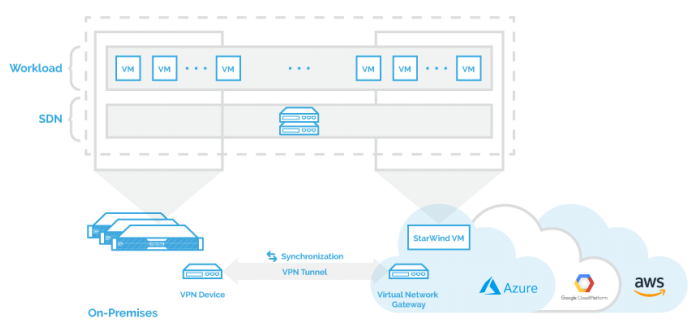StarWind Hybrid Cloud for Azure – White Paper
- November 01, 2017
- 4 min read
- Download as PDF
INTRODUCTION
For years, businesses take advantage of utilizing computing resources to deliver their products and services to their customers. A Private cloud, better-known as servers in your basement, is flexible, secure and scalable. It is usually maintained on a private network, and the hardware and software are dedicated solely to one organization. ISPs or just Datacenters that deliver their resources over the Internet and are open for public use are called a public cloud. Cost efficiency, great scalability, and reliability are beneficial for business workloads. With mentioned benefits, the public cloud platforms become a trend for migration and new deployments.
PROBLEM
Having concerns regarding security, management and availability aspects, some companies are not ready to and might not have an option to completely move their production to a public cloud. Here, a hybrid cloud comes into play – an approach that combines private and public clouds in a software-defined data center. This concept brings the best of both types of clouds, but also sets some new challenges.

CapEx vs OpEx: Maintaining the right balance
Businesses search for a way to connect their on-premises and cloud resources into a unified environment.
- Production and development resources should be somehow distributed across a cloud in order to meet the security requirements.
- Azure, the public cloud from Microsoft, has its own management tool to work with compute and storage resources. IT Engineers are constantly looking for a way to use familiar tools, such as Hyper-V or SCVMM.
- A hybrid could be used as a Disaster Recovery solution. In this case, the public cloud should be able to handle data transfer and fault-tolerance when on-premises disaster happens.
SOLUTION
In StarWind, we have developed a simple and effective Hybrid Cloud solution allowing organizations to enjoy the benefits of both private and public clouds. We do this by combining a well-known Hyper-V ecosystem on top of servers on-premises with Azure VMs. The Hybrid Cloud gets deployed in minutes and is orchestrated using StarWind Manager, Hyper-V, and SCVMM, requiring no experience in the Azure platform. StarWind Virtual SAN distributes highly available shared storage replicating the data between locations. Delivering active-active storage, StarWind provides Disaster Recovery site in a public cloud in order to meet the required RTO and RPO.

StarWind Hybrid Cloud
CONCLUSION
StarWind seamlessly integrates into the existing infrastructure and creates Hybrid Cloud with Azure, extending workloads to a public cloud in a matter of minutes. StarWind not only handles storage availability and performance, but also stretches Hyper-V ecosystem to a public cloud. Businesses can juggle their mission-critical applications between public and private clouds to achieve the desirable level of flexibility and security. Additionally, the Hybrid Cloud can use Azure as a Disaster Recovery site. StarWind Hybrid Cloud features low entry cost and scalability of a public cloud while maintaining compliance and security requirements of a private cloud, making the deployment easy for any organization, big or small.

